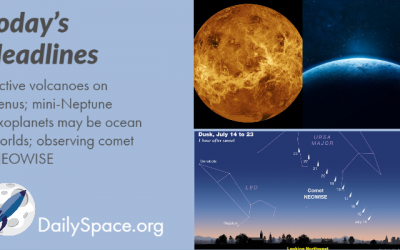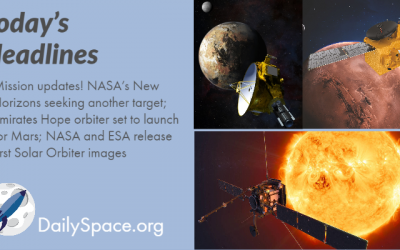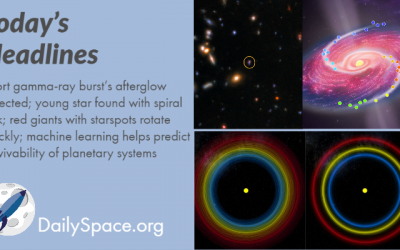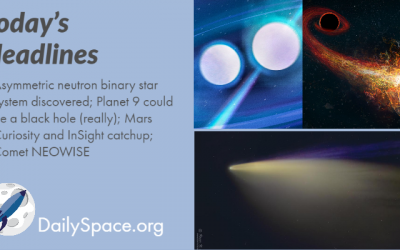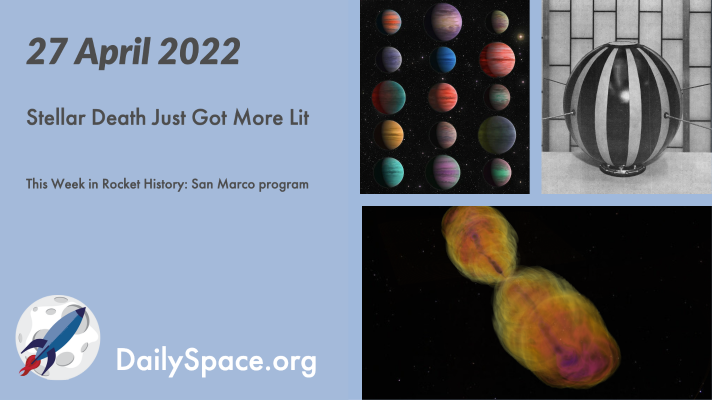
Stellar Death Just Got More Lit
Remember that new object, COW, named for a strange supernova? We’ve seen four more of these Fast Blue Optical Transits, and new research may even have figured out just how and why they occur. Plus, Crew-4 launches, a bunch of planetary science news, micronovae, and this week in rocket history, we look back at the San Marco program.
Catch us on NowMedia TV
Saturday 11pm Central / midnight Eastern
Sunday 10pm Central / 11pm Eastern
Watch live on these stations: Houston 21.10, Atlanta 22.10
or tune-in on Apple TV, Roku, YouTube Live, or Amazon Prime
Active volcanoes on Venus; mini-Neptune exoplanets may be ocean worlds; observing comet NEOWISE
Join us today for exciting news that Venus still has active volcanoes! Also, mini-Neptune/super-Earth exoplanets are possibly irradiated ocean worlds, minus Kevin Costner. And we’ll talk about how to observe comet NEOWISE over the next few days as it climbs higher in the northern hemisphere’s night sky.
Black hole’s corona disappearing act; white dwarf hurtling across Milky Way; SDSS fills in gap in expansion history; new image of CMB continues age debate; using science to analyze art
Join us today as we examine one possible reason a black hole’s corona may have disappeared. Be on the lookout for a runaway white dwarf whose supernova sent it hurtling across the Milky Way. We take a look at new survey results that fill in an 11-billion-year gap in the expansion of the universe. A new image of the cosmic microwave background suggests the universe is 13.77 billion years old, give or take 40 million years. And as a fun bonus, scientists use celestial sleuthing on a Vermeer painting to determine when it was actually painted.
Mission updates! NASA’s New Horizons seeking another target; Emirates Hope orbiter set to launch for Mars; NASA and ESA release first Solar Orbiter images
Join us today as we look at all the spacecraft mission updates. First up, NASA’s New Horizons mission is searching for another Kuiper Belt Object to pass. Next, the Emirates Hope orbiter is set to launch to Mars this month. Finally, we get to share brand new images from the NASA/ESA Solar Orbiter, fresh off the press this morning.
Rocket Roundup for July 15, 2020
Join us for this week’s Rocket Roundup with host Annie Wilson as we look back at the launches that did and didn’t happen, including FOUR successful Chinese launches and one not-so-successful Rocket Lab launch, plus an Israeli MOD launch.
Short gamma-ray burst’s afterglow detected; young star found with spiral disk; red giants with starspots rotate quickly; machine learning helps predict survivability of planetary systems
First, we look at how researchers detected the afterglow of a short gamma ray burst a mere 3.8 billion years after the Big Bang. Then we examine the discoveries of a spiral structure in the disk of a young, heavy star and how red giant stars with large starspots spin faster than those without. And finally, we see how machine learning can be used to predict what planetary systems are most likely to survive.
Asymmetric neutron binary star system discovered; Planet 9 could be a black hole (really); Mars Curiosity and InSight catchup; Comet NEOWISE
Today’s news comes from all over and starts with a pair of pulsars headed toward merger in 500 million years. This system will help us understand August 2017 observations of a neutron star merger. From one high mass object to another, we turn to look at Avi Loeb’s new idea that Planet Nine might actually be a primordial black hole, what to look for if it is. We also catch up on Mars and its current robot explorers: InSight and Curiosity. Finally, we discuss how to see naked eye comet NEOWISE in the evening sky.


 We record most shows live, on Twitch. Follow us today to get alerts when we go live.
We record most shows live, on Twitch. Follow us today to get alerts when we go live.

